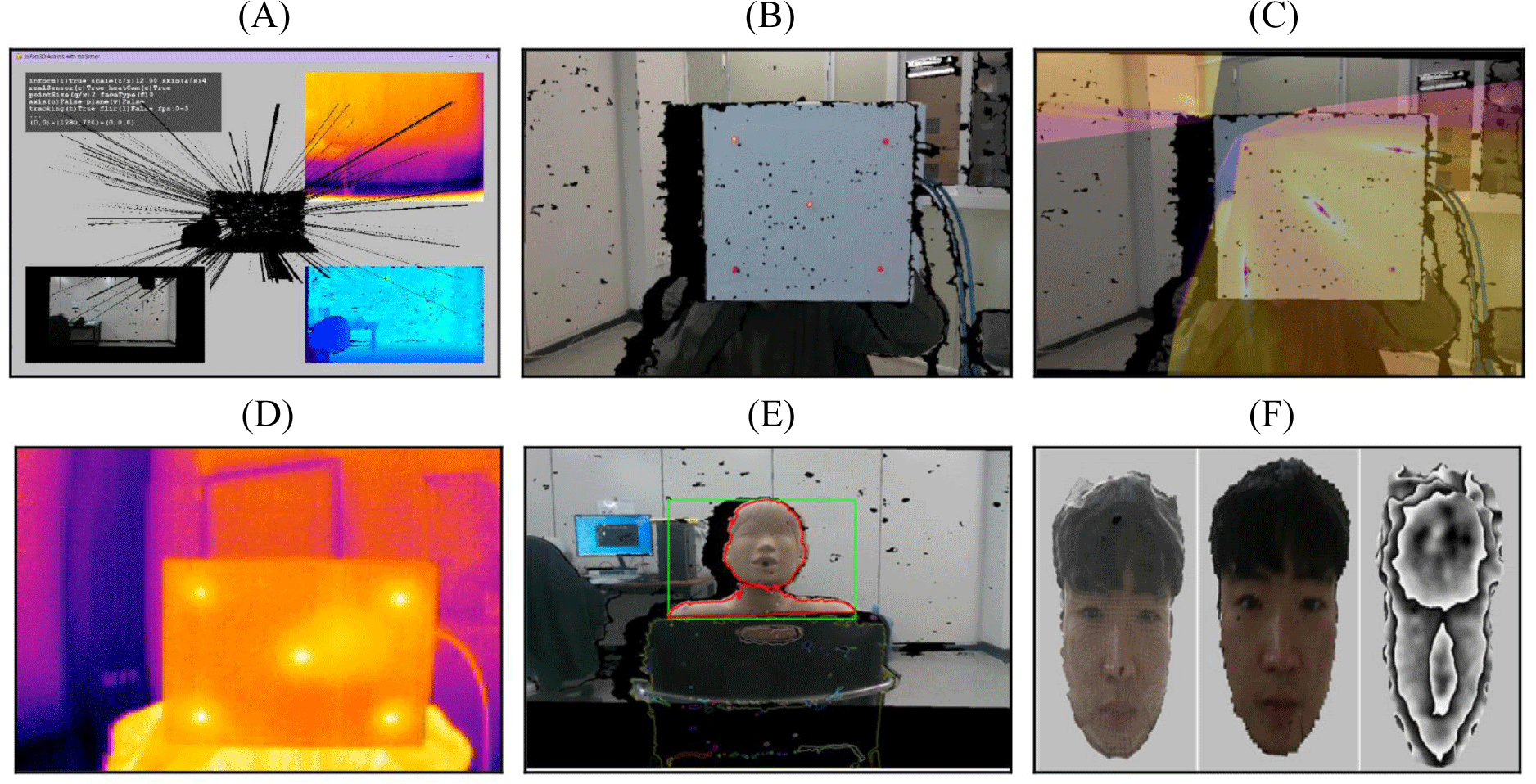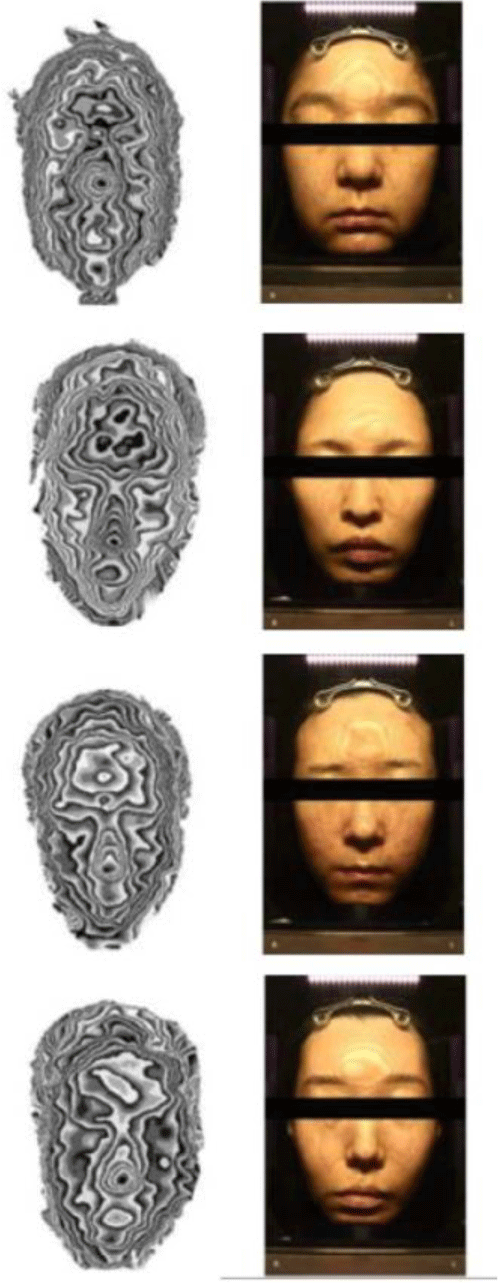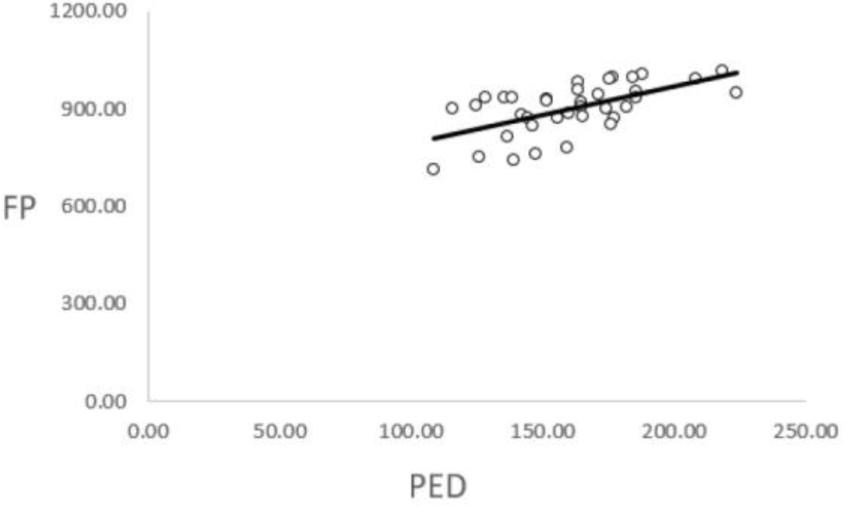INTRODUCTION
With the increase in average life expectancy driven by economic growth and advances in medical technology, there is an increasing desire for both anti-aging measures and overall physical well-being. Presently, youthful appearance is recognized as a competitive advantage, intensifying interest in skincare.1,2 Facial aging begins as early as the 20s. Among the visible signs of aging, skin elasticity are closely linked to the mechanical properties of the skin. Changes in skin elasticity occur gradually over an extended period, making it crucial to validate the evaluation method, especially because measuring skin elasticity using a device involves a different approach than direct visual or tactile assessment.53
Skin elasticity refers to the ability of the skin to return to its original state when subjected to external pressure. It is closely associated with skin oil and moisture levels, dermal collagen and elastin fibers, and the aging process. Various methods for measuring skin elasticity include skin compression-based techniques,4 assessment of differences between skin tensile and recovery properties using sound pressure,5 and various image analysis methods, including the use of ultrasonic waves.6 And also, Moiré Topography is commonly employed in current clinical settings.7
Full-Face photographing system (FP), which is based on moiré 3D topography analysis.8 Moiré refers to a wavy interference pattern that results when two or more periodic patterns overlap. In this method, a grid-shaped frame is positioned in front of the face, and light is directed from one side. This creates a shadow of the grid on the face with the shadow conforming to the facial contours, thus forming a wavy pattern on the skin. This system, based on Moiré principles, visually displays the shape of the skin, facilitating the measurement of skin elasticity and sagging.9 However, FP requires the use of expensive specific equipment. In addition, it is composed of a mounted-type module method, so there are problems such as hassle in use and difficulty in repetitive measurement. This has the disadvantage of not being suitable for time-strapped clinical and mobile environments.
Portable skin elasticity evaluation device (PED) is a new equipment that complements the problem of FP as a device that measures the elasticity of the face. PED measures the elasticity of the face using Intel RealSense Depth Camera D435. PED is compact and lightweight, which makes them highly portable.10,11 Moreover, the FP may lack precise photographing because the entire face must be photographed once taken, whereas PED can accurately capture a specific part of the face by closing the distance between the measuring device and the subject. PED demonstrates remarkable accuracy in depth recognition, enabling its use in facial shape analysis, contour generation for beauty applications, and the assessment of skin balance and facial muscle structure.12
Therefore, this study aimed to find out the correlation between the measured values using PED and the measured values from the FP in order to find out the possibility of using the PED as a tool for measuring skin elasticity.
METHODS
Forty-five women were recruited (20–59 years old; mean age 41.65±11.67). It was conducted between September 2022 and November 2022. The subject selection and exclusion criteria were in accordance with the test method guidelines for cosmetics labeling and advertisements issued by the Ministry of Food and Drug Safety.13 Eligible participants were healthy individuals without acute or chronic physical illnesses, including skin conditions, who could participate throughout the test period and provided informed consent. Exclusion criteria included: 1) pregnancy or lactation, 2) use of topical steroids for over a month to treat skin conditions, 3) participation in the same test within the previous 6 months, and 4) skin issues such as spots, acne, erythema, or capillary expansion. All research procedures were approved by korea institute of dermatological sciences (approval number: KIDS-BBH069-JLU) and conducted in compliance with the Helsinki Declaration.
To acclimatize the skin surface temperature and humidity to the measurement environment, the subjects spent 30 min in a room maintained at a constant temperature of 20°C–24°C and humidity of 45%–55% after washing. For consistency, the same researcher employed uniform lighting and posture when capturing facial images for both the PED and FP.
FP (BEYOUNG, Seoul, Korea), a comprehensive facial skin diagnostic device, employs contour-enhanced facial imaging to assess features such as elevation, contour, wrinkles, slackness, and lifting (Figure 1 (A)). The FP was connected to a PC to run the application. The subjects secured their hair with a hairband and sat on a 45 cm high chair. After obtaining a frontal image of the face with the forehead and chin firmly positioned, the image was stored on a PC.14

PED presented to measure skin elasticity consists of a handle and a Intel RealSense D435 camera (Figure 1(B)). With the handle fixed to the cradle, the entire face of the subject was photographed at a 50 cm distance enough to be photographed within the screen of the camera. The subject was seated on a 45 cm high chair with their hair secured using a hairband.
The RealSense Depth camera D435, developed by Intel, is a compact camera measuring 90 mm in length, 25 mm in depth, and 25 mm in height. It features global shutters and a wide field of view, making it suitable for capturing depth information in applications, such as robotics, augmented reality, and virtual reality. Powered via a USB, it consists of a pair of Depth Sensors, RGB sensors, and infrared projectors (Figure 1 (C)).
This is an infrared thermal image sensor integrated into the Intel RealSense D435, designed to collect accurate temperature data during noncontact image capture (Figure 1 (D)).
To utilize the RealSense camera, install the RealSense SDK application on the PC, and initiate the program (Figure 2 (A)).

An image of the subject was captured using the RealSense Depth camera D435. This camera captures a color image using an integrated RealSense camera and a thermal image using a Flir thermal imaging camera. A calibration process was executed to treat each captured image as originating from a single camera (Figure 2 (B), (C), (D)).
The captured image was processed to separate the face from the rest of the subject’s body, eliminating unwanted background (Figure 2 (E)). Software processing was used to calculate the depth value of the face, with the results stored on the PC (Figure 2 (F)).
Images stored in both the FP and PED in a contour-type Moiré pattern were analyzed using the Image J program (Figure 3). Image J is a preferred tool among researchers because of its simplicity and compatibility with other software.7,15 For each image measured with a Moire filter, an image J program was used to analyze the distance to the last contour of the left temple area by drawing a horizontal line at the top of the contour located in the middle of the glabella area.

Statistical analysis for this study was performed using SPSS version 17.0 for Windows (SPSS Inc., Chicago, IL, USA). The Shapiro-Wilk test was conducted to verify the normality of the data. Pearson’s correlation analysis was conducted to assess the correlation between measurements obtained from the experimental and the reference devices. The statistical significance level (α) was set at 0.05.
RESULTS
Images obtained from both the FP and PED were retrieved using the Image J program and digitized pixel for optimal analysis. The contour distance, which reflects the elasticity of the facial area, measured 917.96mm on the FP and 160.91mm on the PED (Table 1).
| PED | FP | |
|---|---|---|
| Average | 160.91 | 917.96 |
| Standard deviation | 24.73 | 88.21 |
This study aimed to assess the correlation between the FP and the PED using the Intel RealSense D435 camera to measure skin elasticity. The Pearson correlation coefficient between the contour distance of the FP and the PED was 0.6, with a significance probability of 0.002 in the statistical analysis (Table 2, Figure 4).
| FP | ||
|---|---|---|
| PED | Pearson correlation coefficient | 0.6 |
| Significance probability (both) | .002* |

DISCUSSION
The skin condition is often diagnosed through visual examinations or by using enlarged photographs of the face.16 Individuals find it challenging to visually assess skin elasticity and tend to rely on subjective sensations such as the perception of sagging or reduced skin elasticity.3 the development of a quantitative and objective inspection device for skin evaluation is essential. Therefore, the purpose of this study was to find out the correlation between FP and PED measurements to find out the applicability of PED as a new skin elasticity measurement equipment using the Moiré effect.
Moire topography is an clinical measurement with a high degree of precision allows visualization of the shape of the face in three dimensions as a contour map.8 Moiré topography measures objects without direct contact, preventing deformation of materials such as soft tissue by pressure.17,18 FP has been developed as a method of measuring skin elasticity using Moire topography. The FP can measure skin elasticity for the entire face after placing the examiner’s face in the frame of the device. However, FP is expensive, so it is expensive to measure, and it is difficult to measure repeatedly because it can be measured while fixing the equipment in one place.
In this study, PED was introduced as a novel test product for skin elasticity measurement. Like FP, PED is a measuring device that applies the Moiré effect, and the elasticity of the face can be measured by a non-contact method. The elasticity of the skin can be measured using a depth measurement camera. The PED is small in size and easy to carry, making it easy to repeat. PED can measure not only the face but also other parts of the body, and can zoom in and shoot certain parts by adjusting the distance between the camera and the object.
The correlation analysis between PED and FP resulted in a correlation coefficient of 0.6 with a significance probability of 0.002. It was revealed that the PED measurement value also increased as the FP measurement value increased, and It means a significant positive relationship linearly. This outcome aligns with prior research in the field of skin elasticity measurement, demonstrating that 3D face data obtained using the PED exhibits a significant correlation with existing FP. Consequently, the PED is deemed a suitable tool for measuring skin elasticity and holds promise for future facial analyses related to skin elasticity measurements.
Previous studies related to the field of medison have reported a method of measuring facial palsy by applying the Moiré effect. It was able to evaluate easily the area and severity of facial palsy. The calculation of the moire index from a moire topography image allows us to quantitatively assess movement in each part of the face.17 In this respect, PED could propose its applicability as a quantitative evaluation method for facial palsy rehabilitation. Because PED is portable, it can be measured even in the field of physical therapy and could be used to find out the changes before and after physical therapy.
This study has some limitations. First, although the age of the subject may affect the measurement results, the characteristics of each age were not considered. It is difficult to generalize the results because the age groups varied compared to the number of study subjects who participated in the experiment. Second, since the moire effect is greatly affected by light, it is necessary to study the conditions that can maximize the moire effect. In other words, studies on the intensity of light, the distance between the camera and the face, and the measurement angle should be conducted in many ways.
CONCLUSION
This study aimed to evaluate the correlation between the PED, employing the Intel RealSense D435 camera, and the FP for assessing facial area elasticity in healthy adult women. The analysis confirmed a strong correlation between the PED and FD, indicating the suitability of the PED for measuring facial elasticity.







